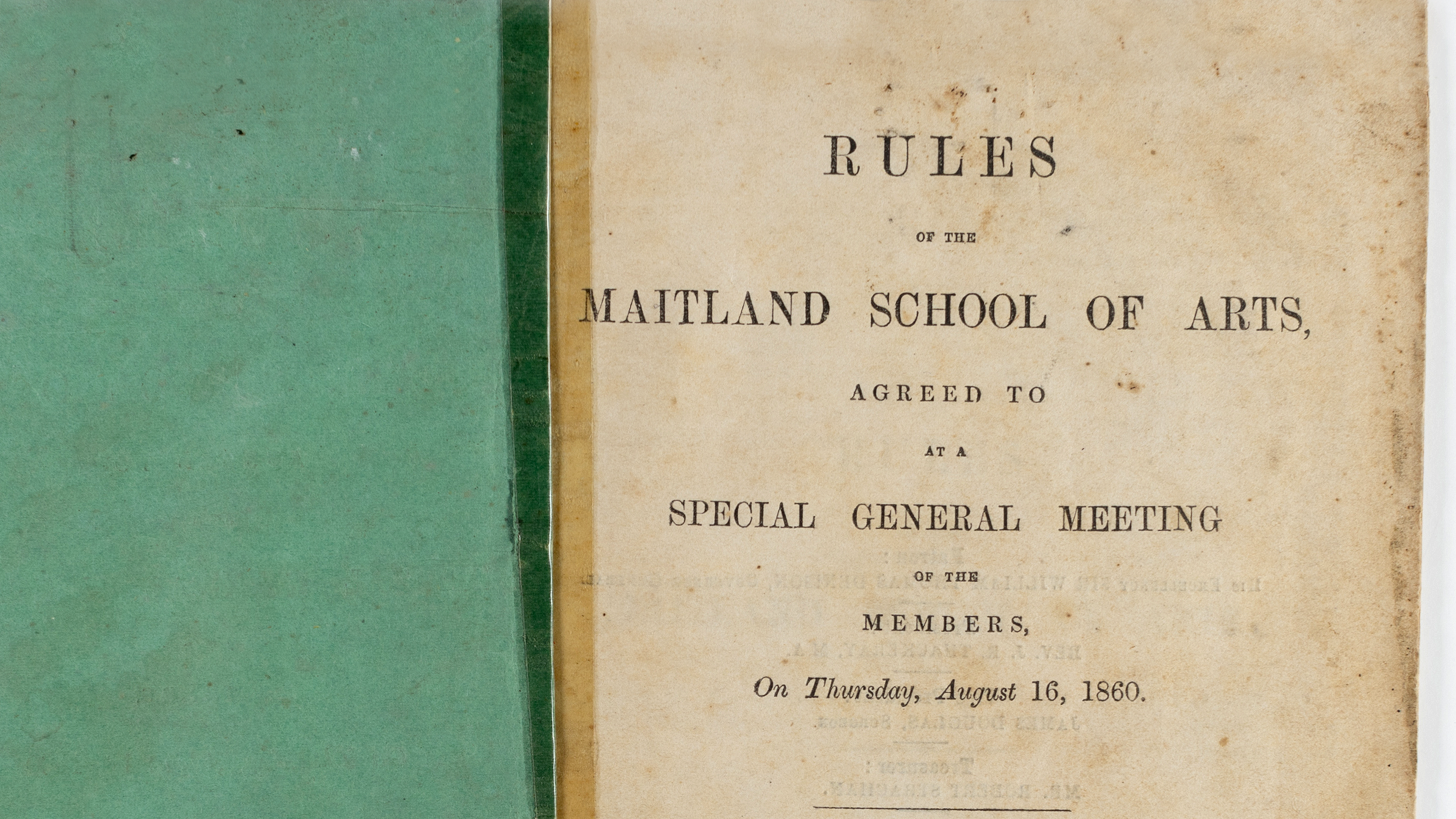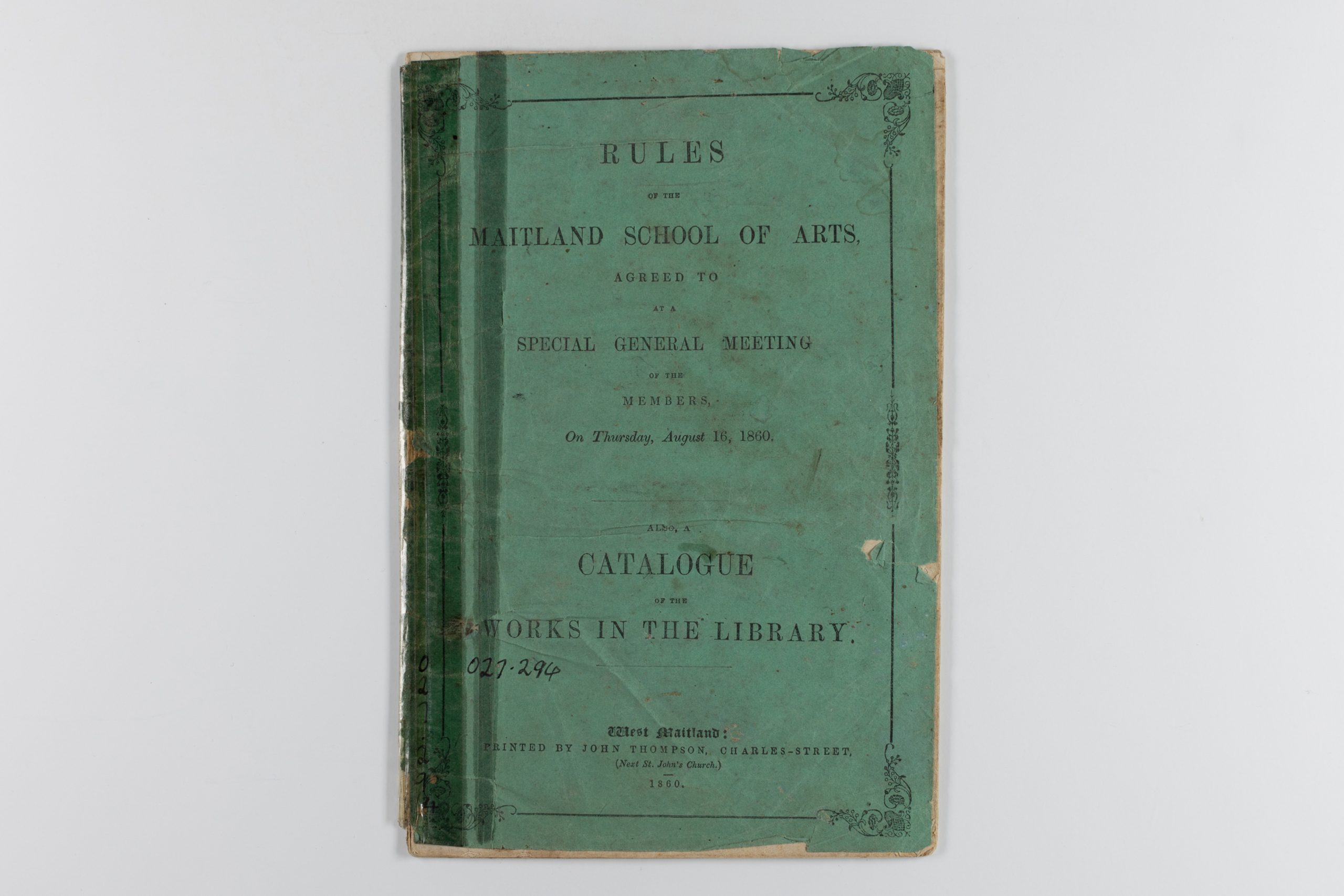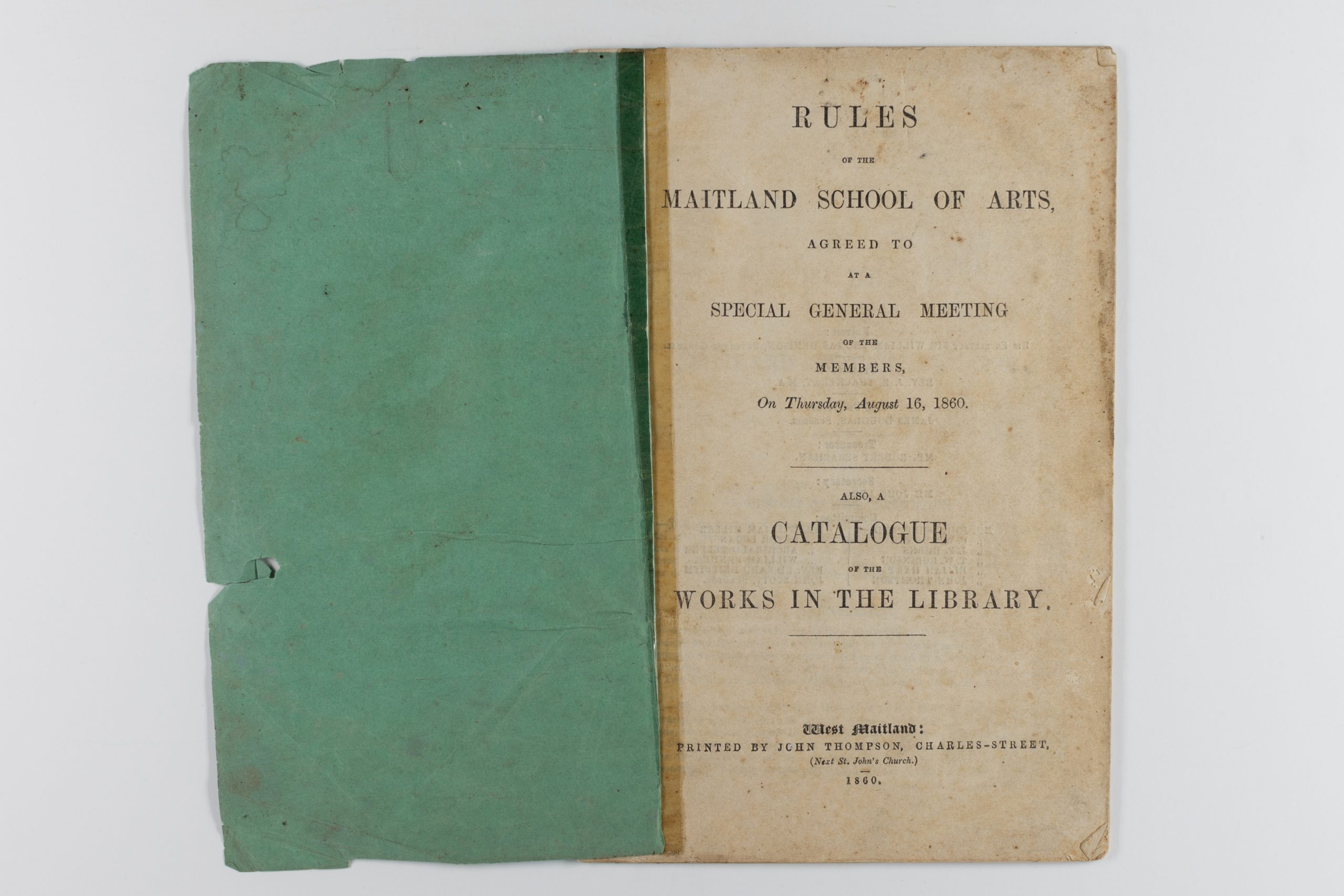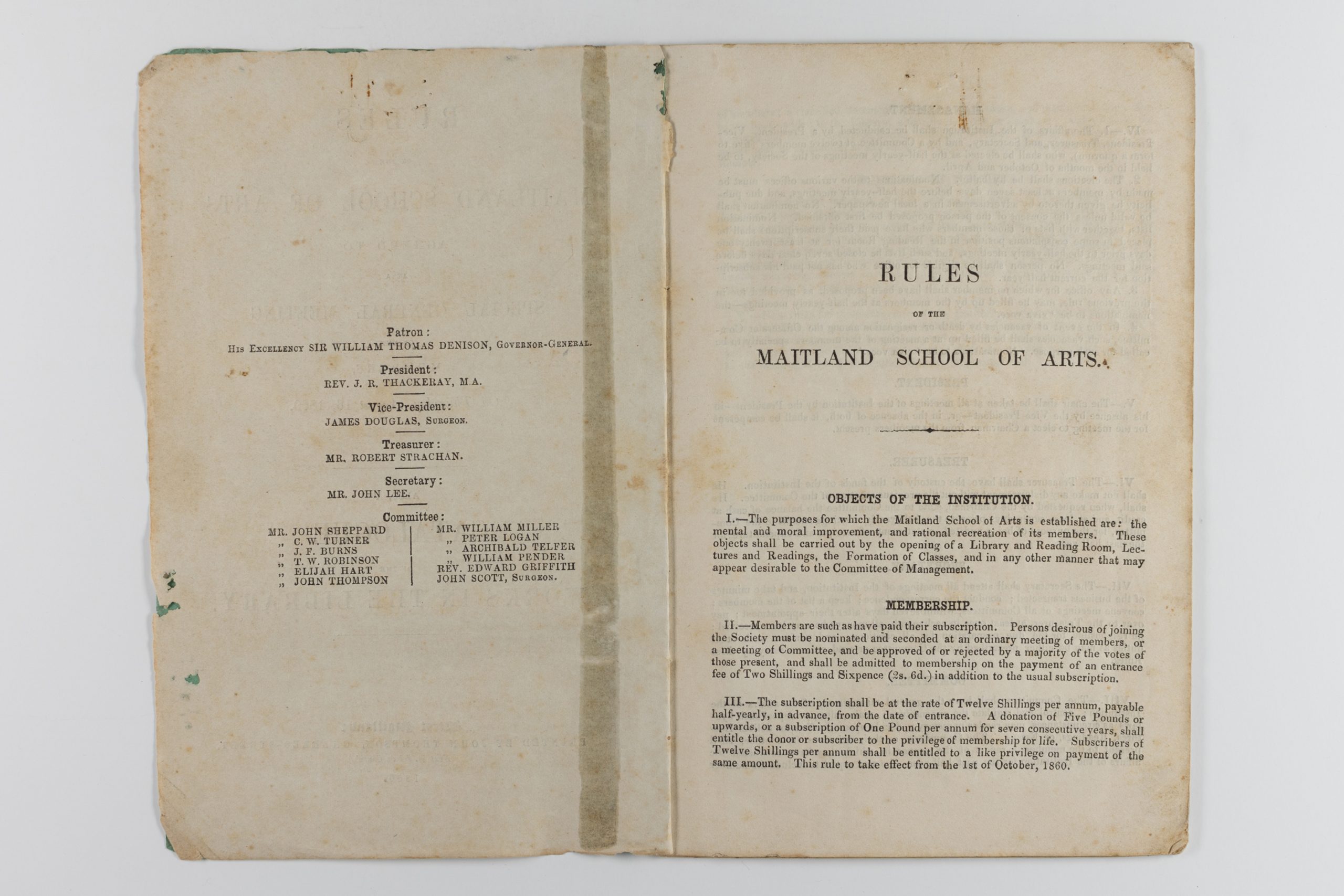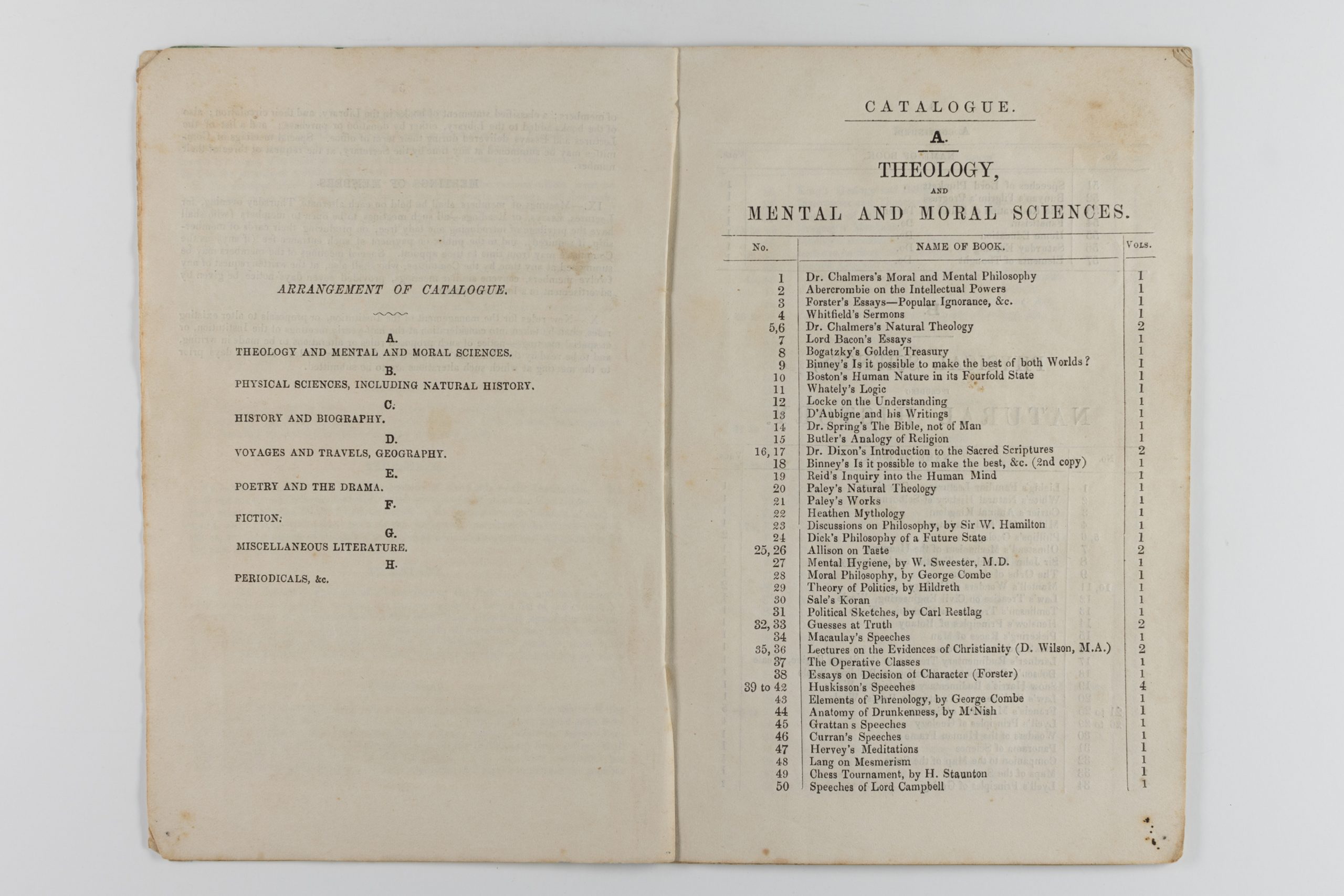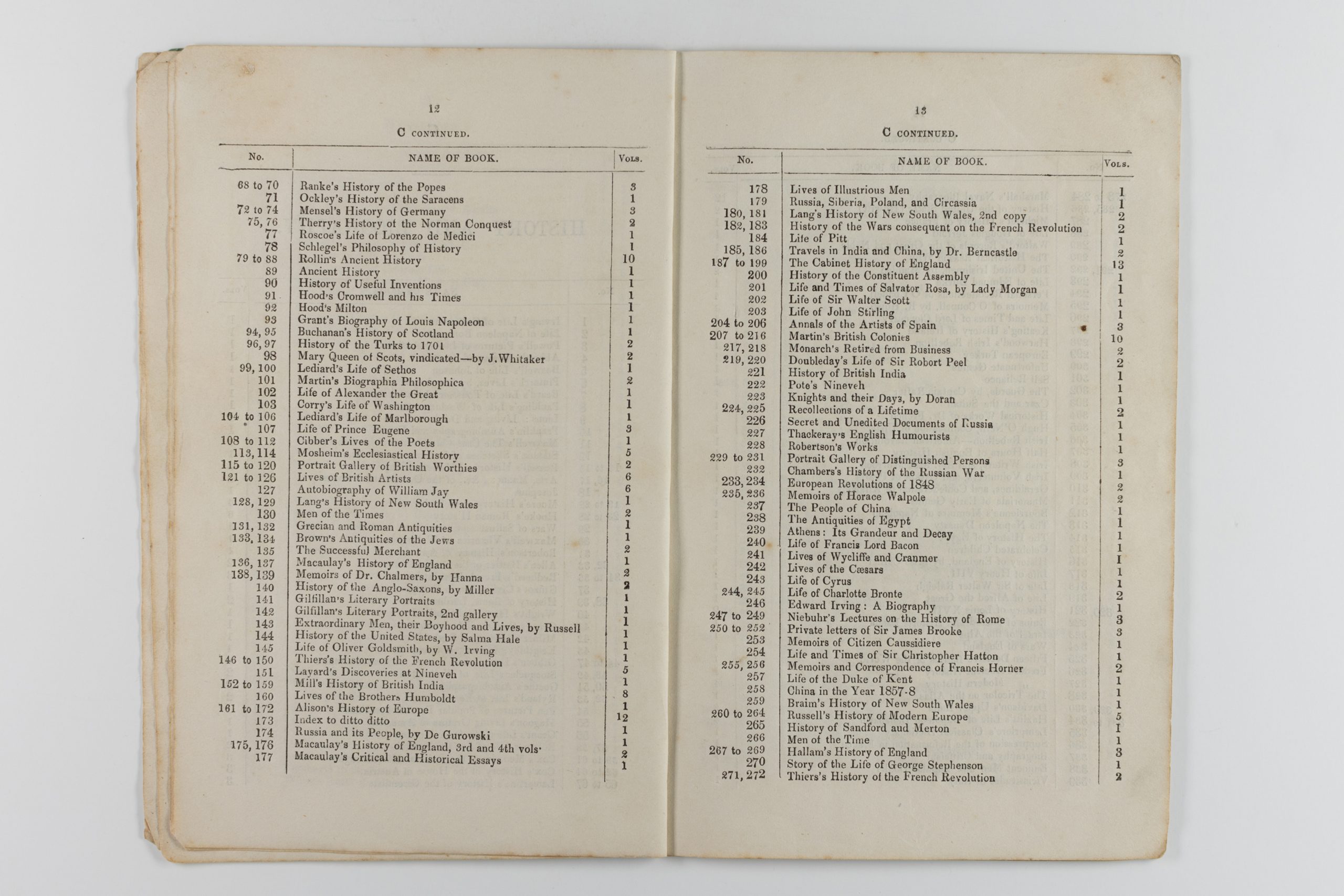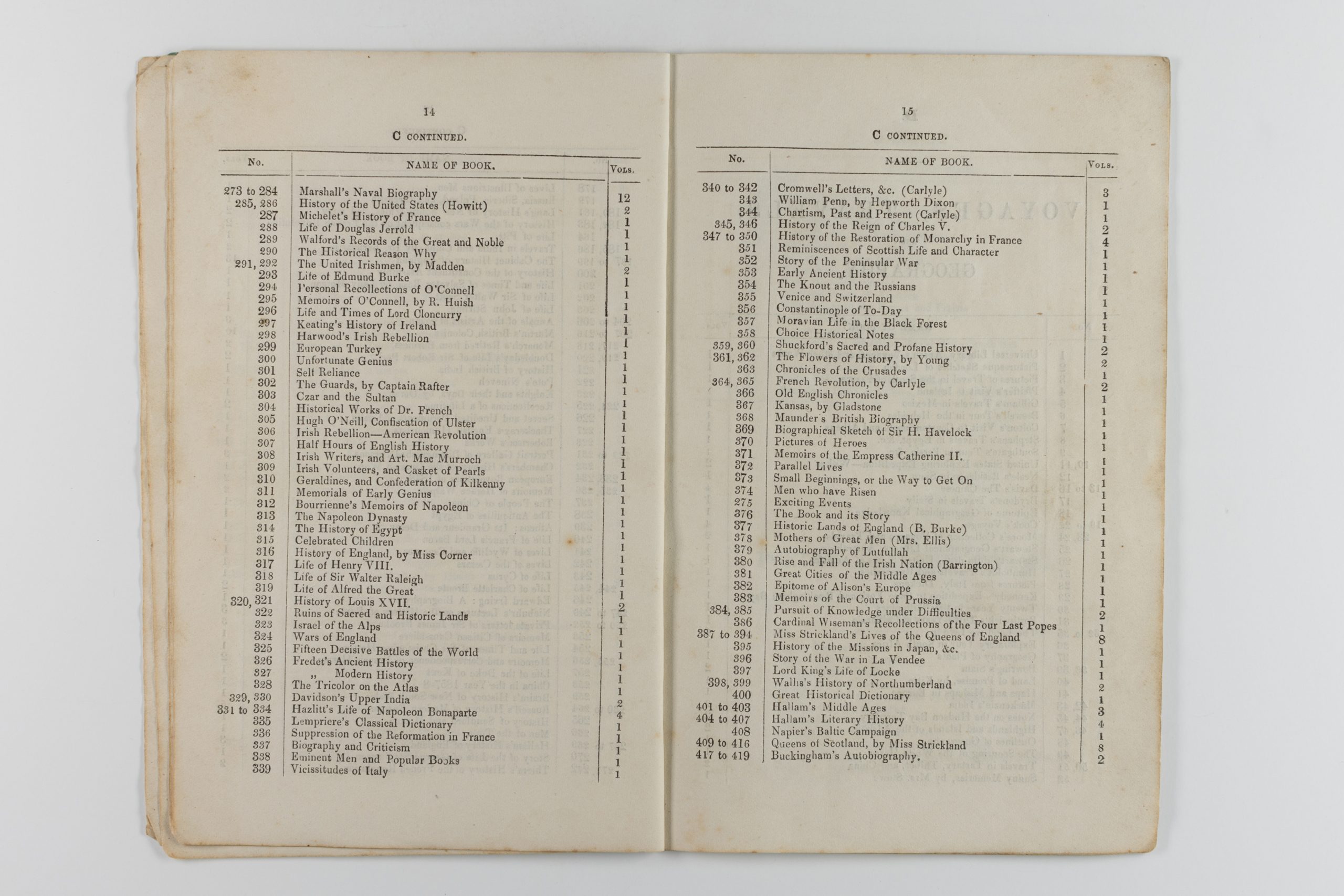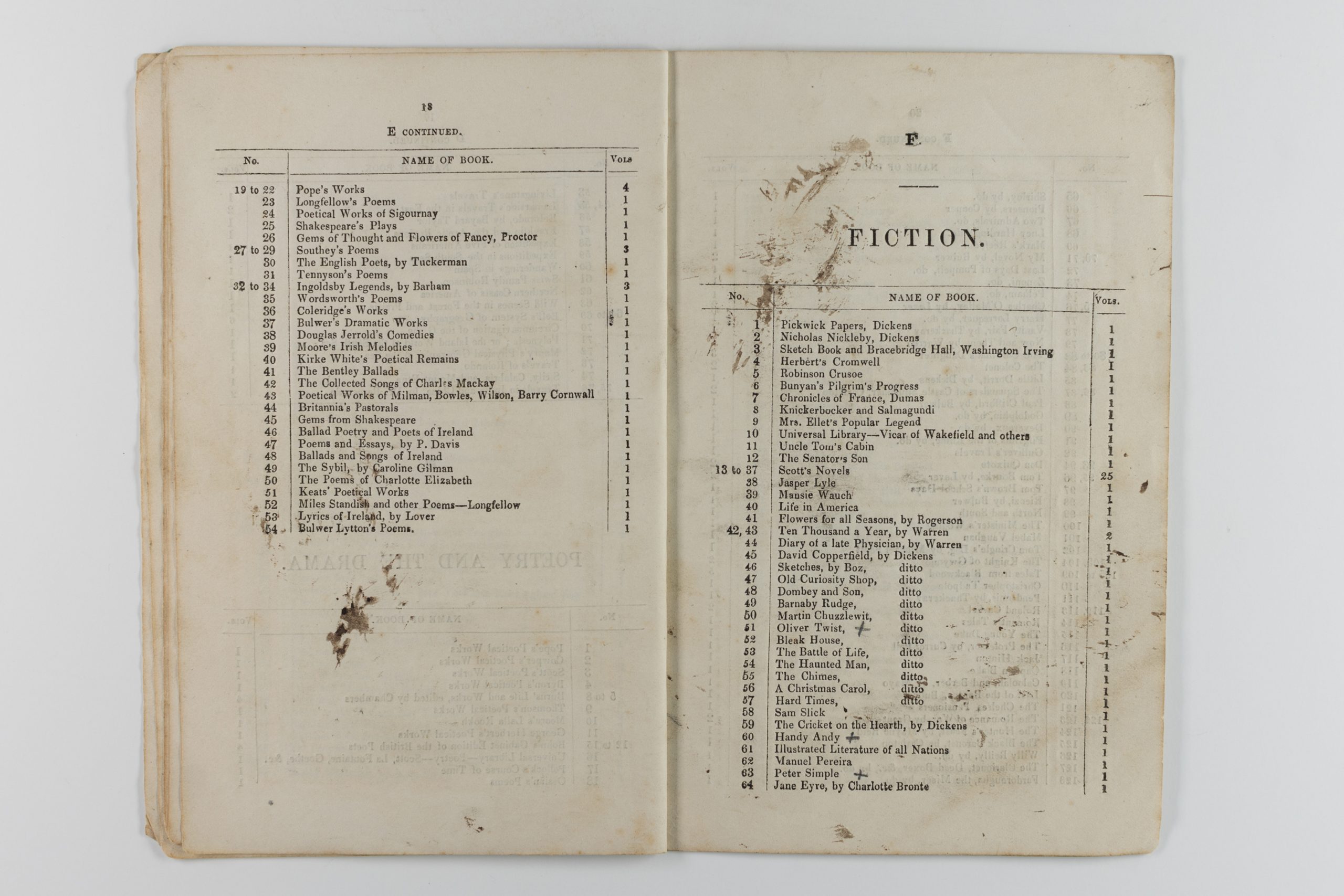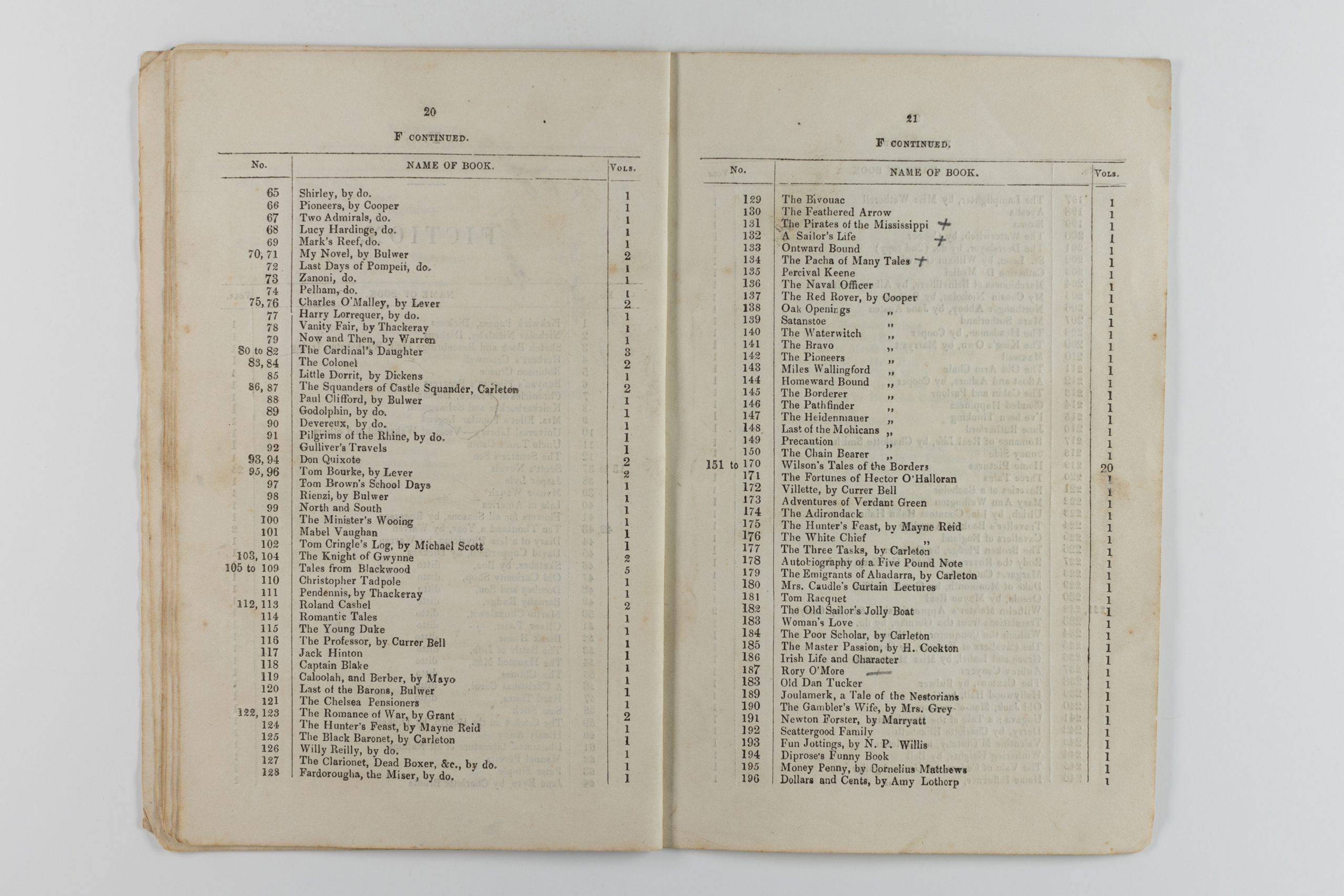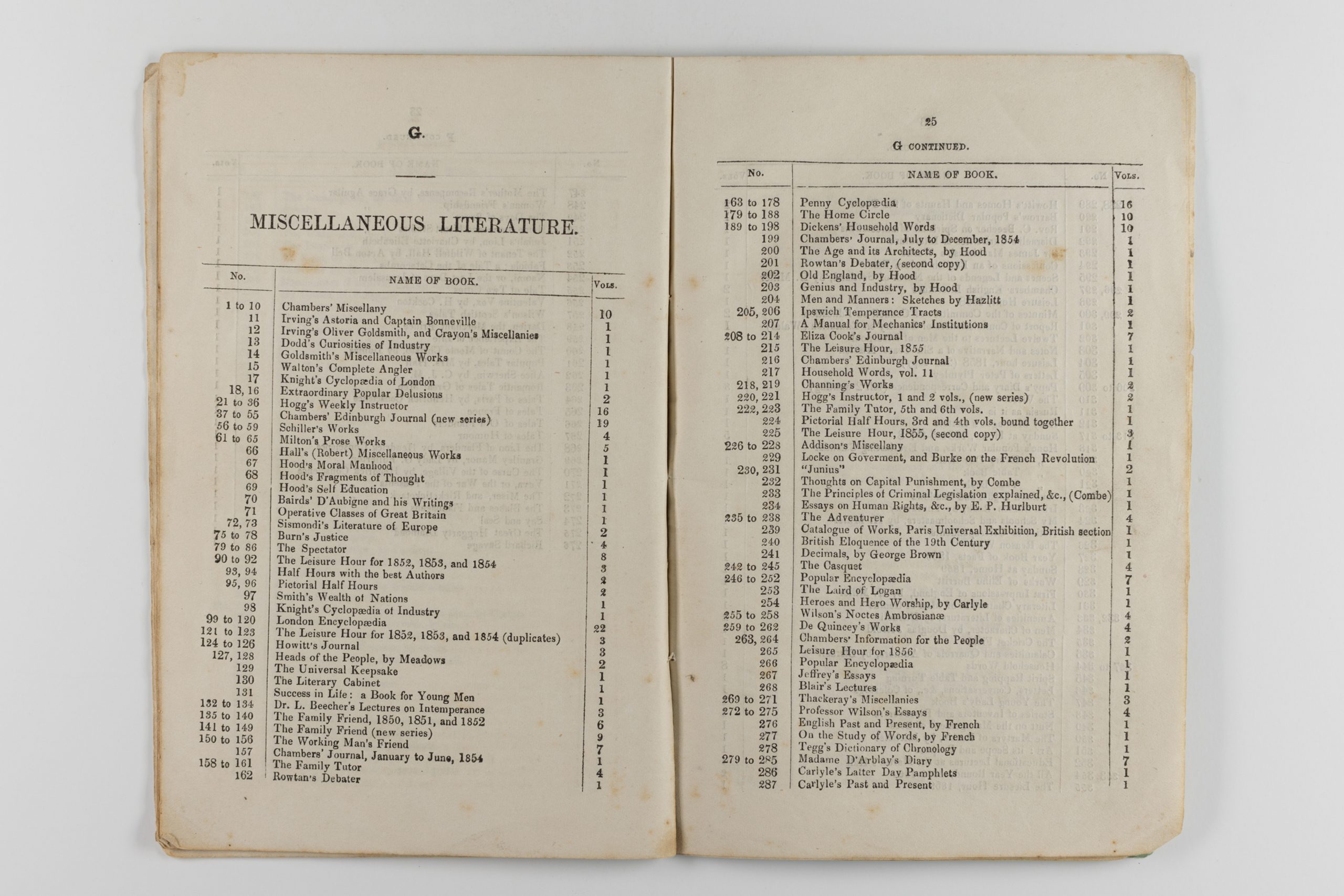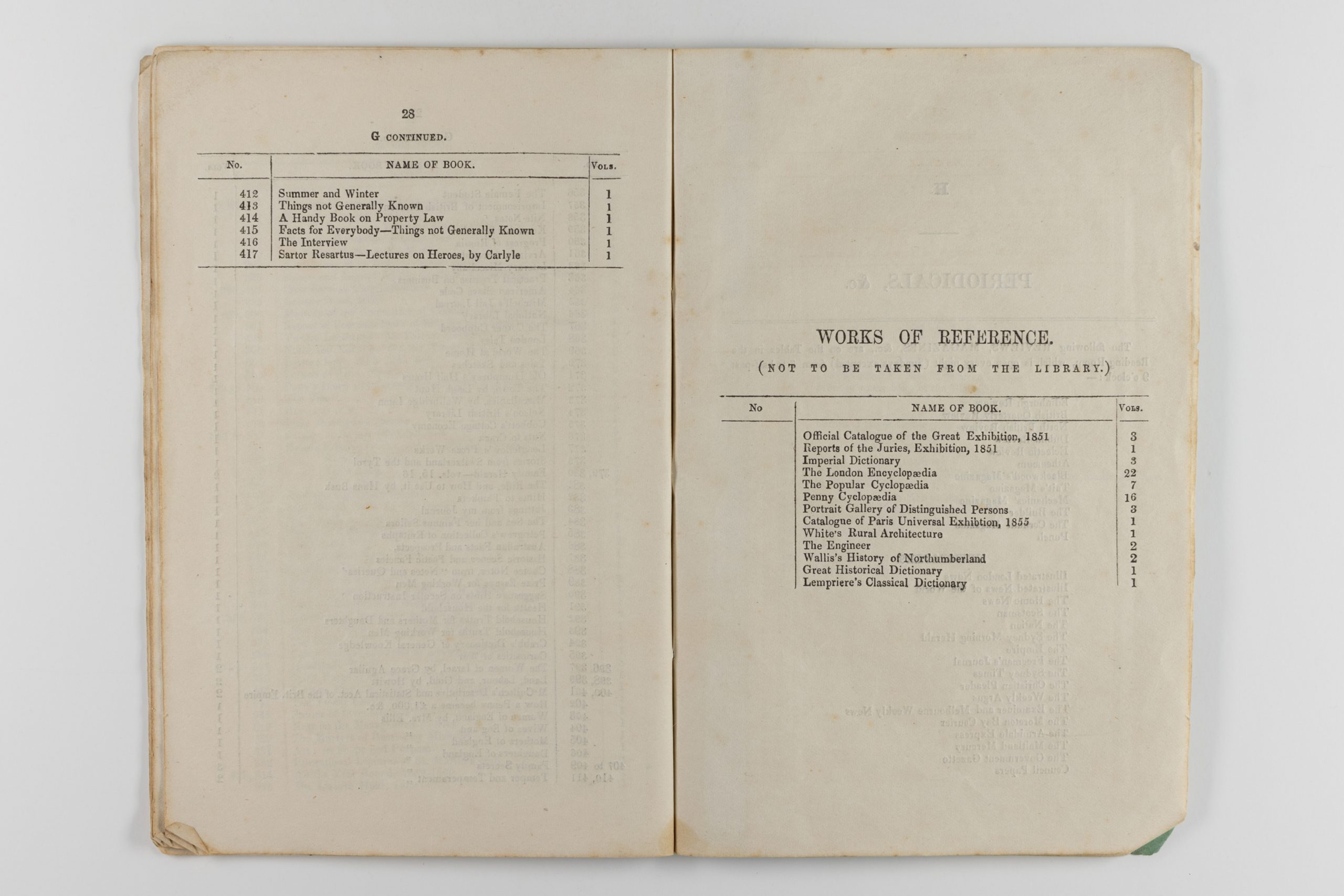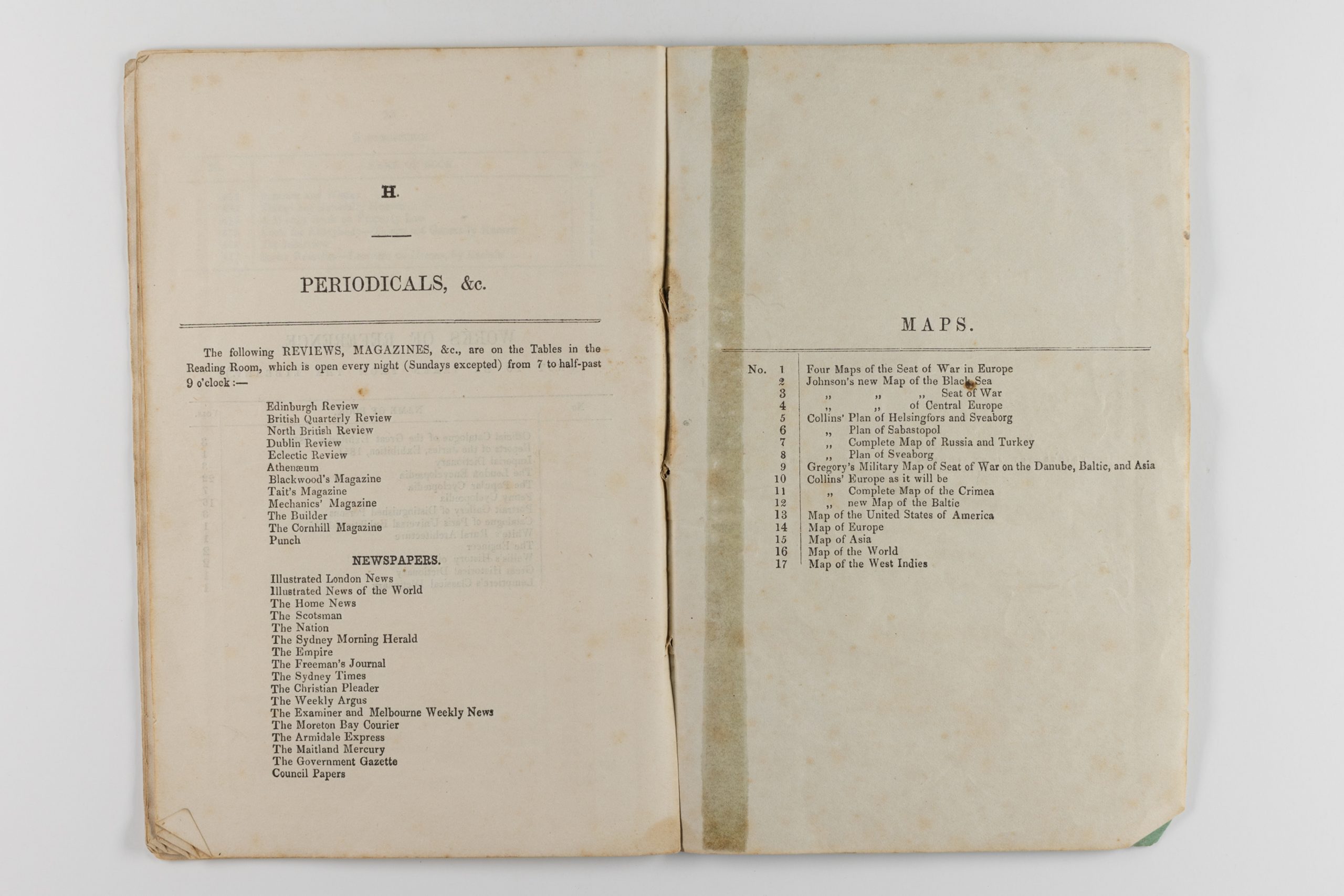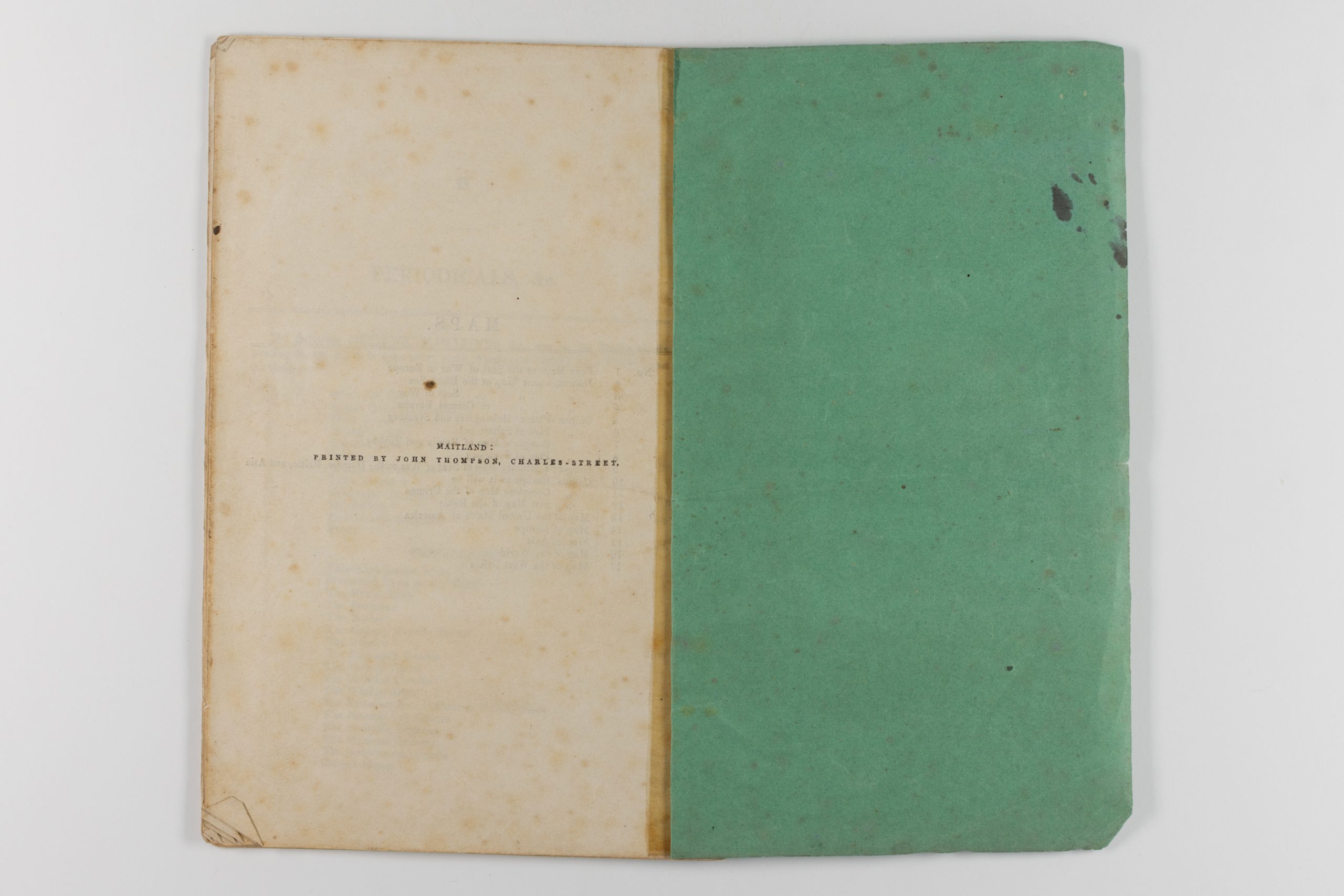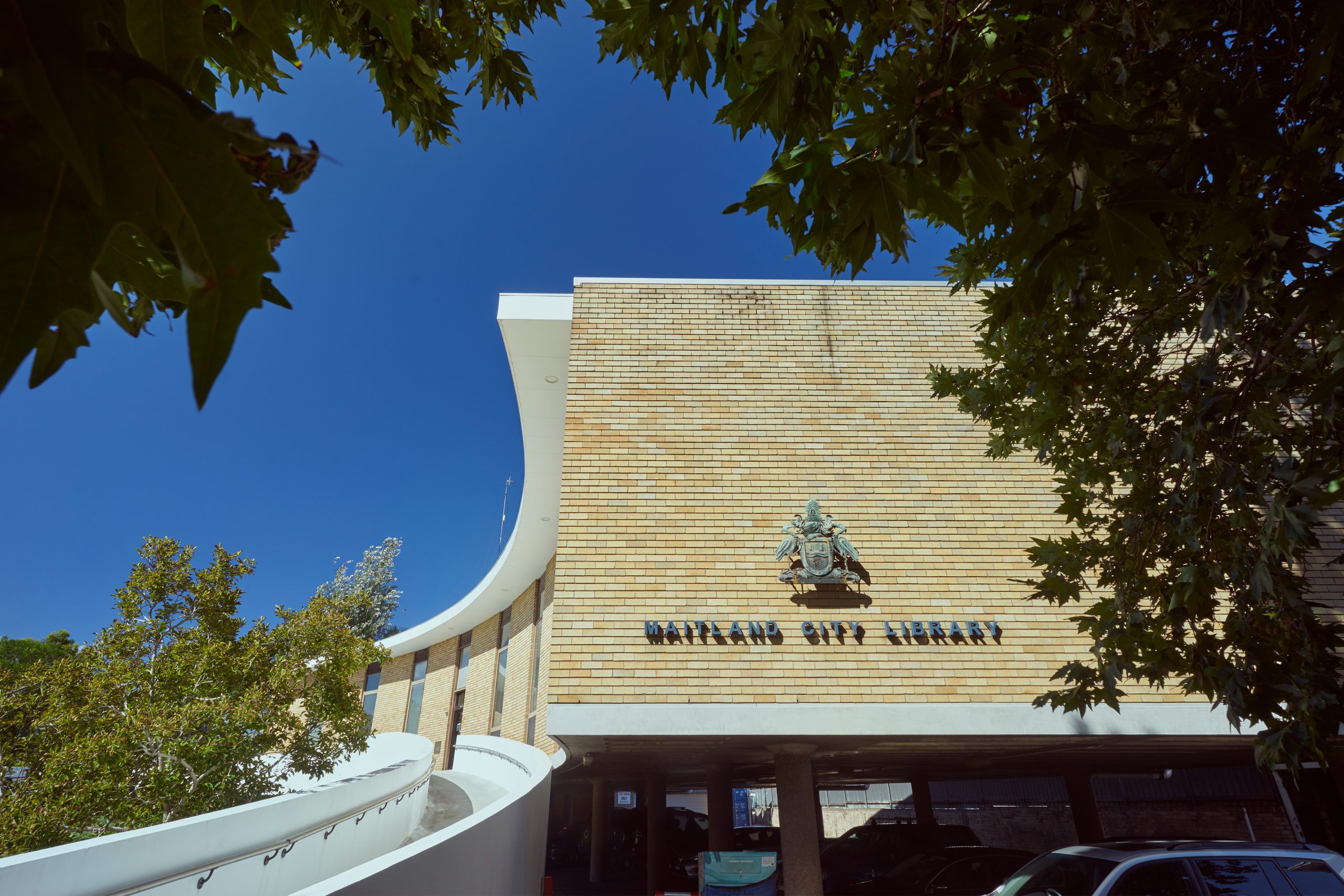Mental and Moral Improvement
85 years at Maitland’s School of Arts
With today’s digital library resources, it’s easy to forget how libraries once relied entirely on paper catalogues.
In Maitland, sometime after 1860, the librarian of the West Maitland School of Arts library (which boasted 417 volumes) cut a length of adhesive tape and stuck it along the spine of this copy of the institution’s catalogue and rule book. Since 1860, it likely sat on the librarian’s desk, the fingers of countless members turning its pages, leaving it dog-eared, worn and torn.
It is now one of a group of documents, also including annual reports and minute books, that span nearly the full 85 years of the school’s existence. These documents now record the rise and fall of an organisation that was once crucial to the life of the Maitland community.
Intent on ‘mental and moral improvement,’ the West Maitland School of Arts offered its members a library and rooms for reading, lectures, and games – all in a dedicated building constructed in 1857 on Victoria Street.
The school was part of a global movement, founded in Scotland in the early nineteenth century, on the belief that industry and society would benefit from training an educated artisan class with greater scientific knowledge. It quickly spread across the English-speaking world, with about 750 schools of arts in NSW alone.
In principle, it was open to all. In practice, membership was overwhelmingly male through the nineteenth century. Even in 1919, the Annual Report of the West Maitland School of Arts confirms that the committee was largely composed of men.
A corset advertisement in the report hints that there were certainly some female members at this time – though they were not considered full members and were offered special reduced rates.
By 1919, the West Maitland School of Arts library was thriving, offering 17,000 volumes. But by the 1930s, it fell into decline as opportunities for education and recreation expanded.


